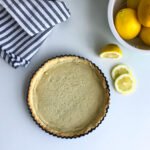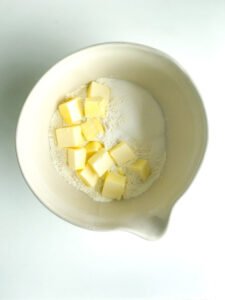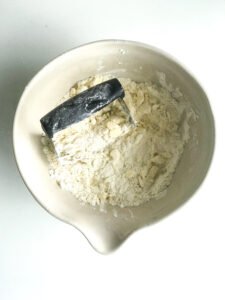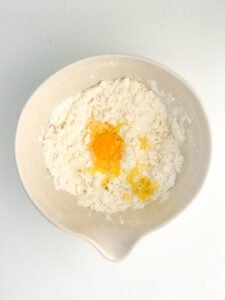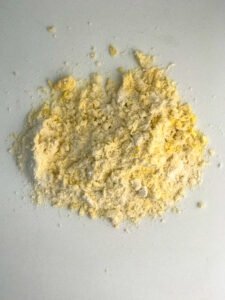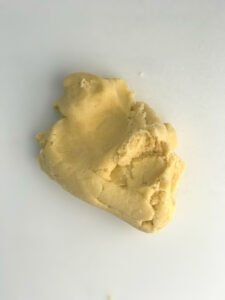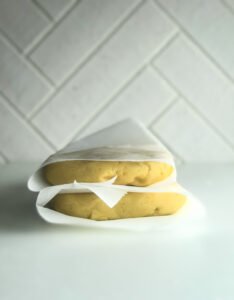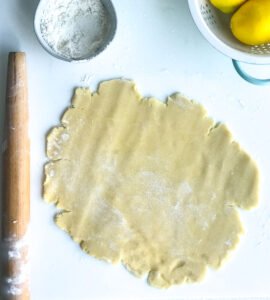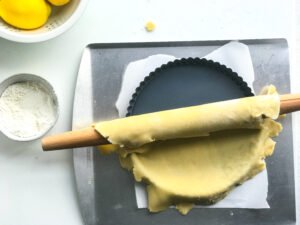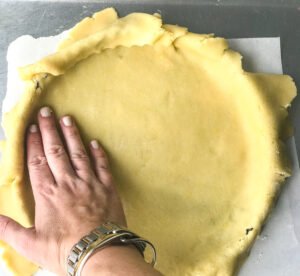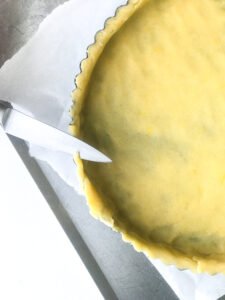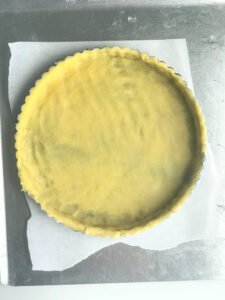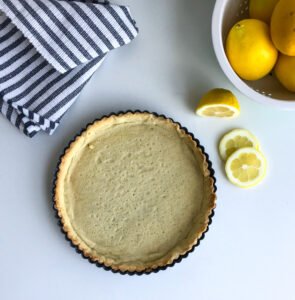Pâte Sucrée (French Sweet Dough)
The perfect sweetness of lemon, fresh fruit and burnt meringue. I always say, lemon adds a little cheer to anyone's day.
Servings: 2 crusts
Calories:
Ingredients
- 12 oz All Purpose Flour (approx. 2 3/4 cups & 2 TBSP)
- 4 oz Sugar (approx. 1/2 cup & 1 TBSP)
- 8 oz Butter - cubed at room temperature
- 1 Egg
- Zest of one Lemon
Special Tools
- Baking beans/weights
- Parchment paper
Instructions
- In a bowl, mix together your dry ingredients.
- Add in your cubed butter.
- Using a pastry cutter, fork or your fingers, cut the the butter into the dry ingredients, until it's evenly distributed throughout.
- Add in your egg and lemon zest.
- Using a pastry cutter, fork or your fingers, break up the egg and mix into the dough. Once the egg is incorporated, dump the dough out on the counter. It maybe a little crumbly still.
- Using your hands start working the dough so that the ingredients become homogeneous. Unlike cold butter for pie dough, this butter should be completely incorporated into the dough. It will kind of resemble cookie dough.
- Cut the dough into two evenly sized disks. Wrap in parchment paper and refrigerate for at least 30 minutes or up to 2 days. *you can freeze your second dough at this point for future use. Place in a freezer-safe bag, label it and freeze. See notes below for defrosting instructions.
- After the dough has had time to chill, take it out of the refrigerator and let it rest for 2-3 minutes, this will make it easier to start the rolling process.Warning: make sure your dough chills for at least 30 minutes, as the dough starts to warm up it will become increasingly harder to manage because the butter will become too soft. So you will need to work uninterrupted until the dough is in the tart pan.
- Sprinkle a little of all purpose flour on your counter and carefully roll the dough out, pressing evenly with your rolling pin. You can sprinkle flour on the dough as needed to help prevent the rolling pin from sticking. To keep a circular shape as your roll turn your dough a little after a couple of rolls.
- Carefully lift the dough up using your rolling pin.
- Carefully lay the dough down on the tart pan so that your dough overlays the sides of the tart pan (see picture in next step).Don't worry if your dough starts to fall apart, a warmer than usual kitchen will make that happen - another strategy is to roll the dough out onto floured parchment paper, which is what I normally do but I forgot this time. Then you can place your tart pan over it and carefully flip the dough into the pan. To see this in action, check out this pie dough recipe, it's the same technique.
- If your crust fell apart in the transfer to the tart pan or if you have a hole, just patch it up. The good thing about this dough is no one will see it. It's helpful to dip your fingers into flour as you do this so they don't stick to your dough.With floured fingers, press around the edges to make sure all the dough is pressed up against the pan. Also make sure that the crust is as even as possible throughout.
- To remove the excess dough, roll you rolling pin over the top of your tart pan and let the extra dough fall to the side.
- Place in your freezer for 15-20 minutes, the dough should be firm. While you wait, preheat your oven to 375F.
- For the cleanest edges (optional), take a small knife and trim the excess dough off, cutting up and away from the center.
- Line your dough with parchment paper and cover with baking weights or beans. Make sure to gently press around the sides of the pan to keep the dough from rising too much while it bakes. FYI: If you use beans they will not be edible to recook after baking but you can save them for future tarts and pies.
- Bake at 375F for 20 minutes. Remove the weights and parchment paper and bake again for another 10 minutes until the crust is done. It should be dry and slightly colored. Let it cool completely in the tart pan on a rack.
Nutrition
Serving: 0g | Carbohydrates: 0g | Protein: 0g | Fat: 0g | Saturated Fat: 0g | Polyunsaturated Fat: 0g | Monounsaturated Fat: 0g | Trans Fat: 0g | Cholesterol: 0mg | Sodium: 0mg | Potassium: 0mg | Fiber: 0g | Sugar: 0g | Vitamin A: 0IU | Vitamin C: 0mg | Calcium: 0mg | Iron: 0mg
